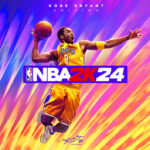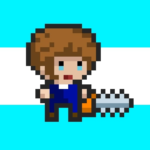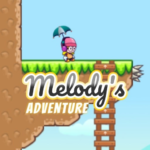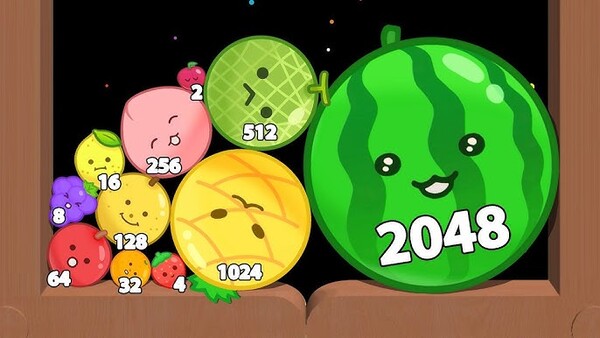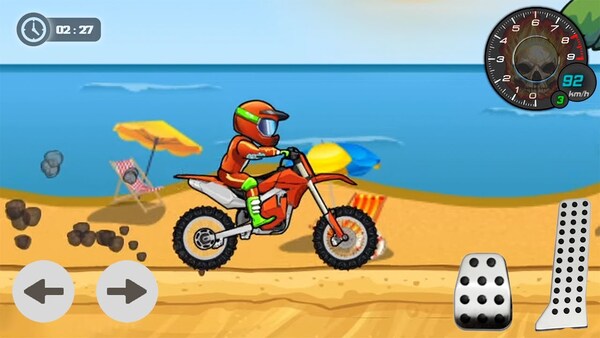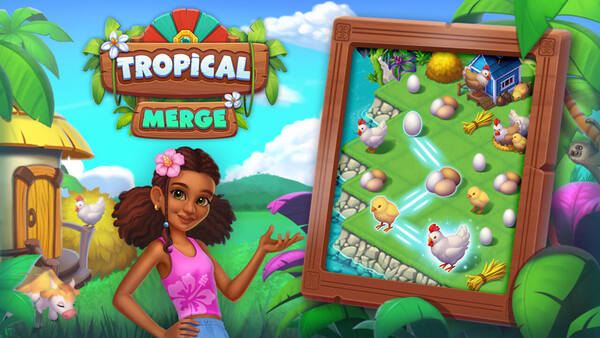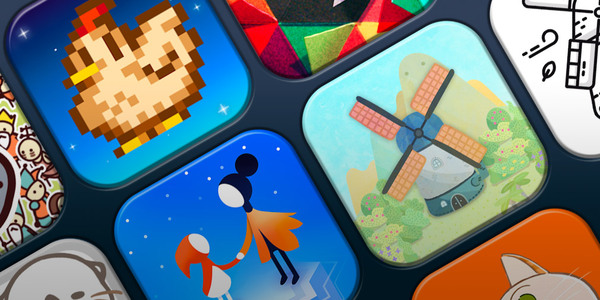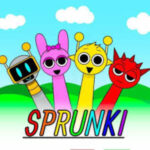Toca Boca World: The Digital Toy Studio That Redefines Creative Play
In an age where children are constantly exposed to screens, few mobile games manage to strike the right balance between entertainment and creativity. Toca Boca, a Swedish app development studio, has done exactly that. Since launching its first titles in 2011, Toca Boca has built a digital ecosystem of open-ended, imagination-driven experiences that captivate kids—and gain the trust of parents worldwide.
This article explores what makes Toca Boca so enduringly popular. We’ll walk through its origins, flagship games like Toca Life World, design philosophy, educational impact, safety features, and why it continues to dominate app store charts globally.
The Birth of Toca Boca World : From Stockholm to Millions of Devices
Toca Boca World was established in Stockholm, Sweden, as a division of Bonnier Group. Its mission was clear from the beginning: to create digital toys, not just games. Unlike traditional mobile titles that focus on points, levels, or competition, Toca Boca apps are intentionally free of rules, timers, or goals.
The idea was revolutionary at the time. In 2011, the studio released its first app, Toca Tea Party, which simulated a tea party for kids using touch controls and pretend play. The success of this simple but effective app paved the way for dozens of other titles, all based on child-led exploration.
Soon, the brand grew beyond expectations. By 2014, Toca Boca had already reached more than 85 million downloads. Today, that number exceeds hundreds of millions globally—an impressive feat for a brand focused purely on child-safe, non-competitive play.
Toca Life Series: The Heart of the Toca Boca Experience
Of all the apps released by Toca Boca, none are as impactful as the Toca Life series. Starting with Toca Life: Town and eventually expanding into a unified experience called Toca Life World, this series lets players explore a digital world filled with characters, locations, and limitless storytelling opportunities.
In Toca Life World, players can visit cities, schools, hospitals, hair salons, farms, and even underwater kingdoms. Each area is interactive, and players can move characters, give them accessories, change their clothes, and create their own scenes.
What makes this series stand out is its modular design. Players can download additional locations and characters—some free, some paid—to expand their world. Unlike games that push microtransactions aggressively, Toca Boca gives users the choice to build their digital playground at their own pace.
Design Philosophy: Why Toca Boca Works So Well for Kids
Toca Boca’s design philosophy revolves around simplicity, safety, and expression. Each app is crafted with intuitive interfaces that even toddlers can navigate. There are no advertisements, no text-based instructions, and no pressure to "win" anything. Instead, the apps are designed to stimulate pretend play—something often lost in modern digital games.
Furthermore, Toca Boca places a high value on representation and inclusivity. Characters in the apps come in all shapes, sizes, colors, and identities. Children can see themselves reflected in the game, which promotes self-expression and empathy.
The art style is colorful and playful, with rounded designs and whimsical animations. Sound effects are fun without being overwhelming, and actions are designed to provoke curiosity and experimentation.
Educational Benefits: Learning Without Lecturing
Although Toca Boca world doesn’t market its apps as “educational,” the learning benefits are real. Through storytelling and imaginative role-play, children improve their language skills, emotional intelligence, and problem-solving abilities.
For example, when a child acts out a hospital scene, they’re learning about health, empathy, and social roles. Similarly, pretending to run a restaurant helps build organizational and numerical skills. All this happens naturally—without the child ever feeling like they’re doing homework.
In addition, the lack of time pressure or competition encourages perseverance and creativity. Children feel safe to experiment, fail, and try again. This is the very definition of learning through play.
Offline Access and Safety: Designed with Parents in Mind
Toca Boca understands the concerns of modern parents. That’s why most of its apps are designed to work offline, without internet access. This makes them ideal for long car rides, waiting rooms, or anywhere screen time is allowed.
More importantly, Toca Boca doesn’t include third-party ads or hidden fees. While some content is paid, everything is clearly labeled, and the company avoids manipulative monetization tactics that plague other children’s games.
Parental controls are intuitive, and the apps are regularly updated for performance and security. This commitment to transparency and child safety is one reason why parents worldwide continue to trust Toca Boca.
Toca Boca’s Expanding Universe: From Hair Salons to Science Labs
Over the years, Toca Boca has released a wide variety of themed apps. Some favorites include Toca Hair Salon, where kids cut and dye digital hair with silly results; Toca Kitchen, where children can prepare food and see characters react; and Toca Lab, which introduces basic chemistry concepts using adorable lab characters.
Each app brings something new to the table, but all maintain the core Toca Boca experience—freedom to play and create without judgment. Whether a child wants to design wild hairstyles, cook questionable meals, or mix chemicals in a lab, there’s a Toca app for that.
This variety helps keep kids engaged while allowing them to explore different interests and themes.
The Global Appeal of Toca Boca: A Game for Every Culture
Part of Toca Boca’s success lies in its global mindset. The games feature diverse characters, multilingual support, and universal play mechanics that transcend cultural barriers. There’s no need to read complex instructions or understand a specific culture to enjoy the game.
The studio actively includes cultural elements without resorting to stereotypes. For example, the Toca Life: World app has locations inspired by Asian street food markets, Nordic winter festivals, and Latin American dance scenes. All of this helps kids explore different parts of the world, even if they’ve never left their hometown.
Because the games speak through actions rather than words, they are just as accessible to a child in Vietnam as they are to one in Germany or Brazil.
Community and Content Creation: Fueling the Toca Boca Ecosystem
Though Toca Boca is aimed at kids, it has also found a passionate community of older creators and content makers. YouTube channels featuring Toca Life skits, storytelling videos, and speed builds attract millions of views. TikTok is also full of Toca content—everything from outfit inspiration to role-playing scenes.
The studio embraces this content-driven culture by running fan art contests, updating character packs, and listening to user feedback. This ongoing interaction helps maintain excitement around the brand and introduces new generations to the games.
Even teachers and therapists have used Toca Boca apps in classrooms and sessions to spark conversations about emotions, social behavior, and storytelling.
Monetization Strategy: Balanced and Transparent
While Toca Boca games are not entirely free, they strike a fair balance. Most apps require a one-time purchase, with no ads or hidden costs. Toca Life World, however, uses a freemium model where users get a starter world for free and can purchase add-ons.
These purchases are not necessary to enjoy the game but provide value for families who want more variety.
Pros and Cons of Toca Boca
Pros:
Encourages creativity and storytelling
Safe, ad-free environment suitable for young children
Offline access for use anytime, anywhere
Beautiful, inclusive design and animations
Wide range of apps with diverse themes
Educational benefits through play
Trusted by parents and educators
Cons:
Some content locked behind in-app purchases
Limited game mechanics for older kids or teens
No online multiplayer or collaboration features
Occasional bugs or slow loading times on older devices
Creative freedom may confuse very young users without guidance
Final Verdict: Is Toca Boca Still Worth It in 2025?
Absolutely. Toca Boca continues to deliver one of the most well-rounded, child-friendly gaming experiences in the app ecosystem. It blends open-ended play with thoughtful design, encourages creativity, and respects the intelligence of its audience. Whether you're a parent looking for safe screen time, a child seeking imaginative freedom, or an educator exploring digital storytelling, Toca Boca offers something valuable.
More than just games, Toca Boca apps are digital toys—tools that help children understand the world by building one of their own. In a landscape filled with noise and distractions, Toca Boca remains refreshingly pure, intentionally simple, and endlessly playful.
Expert Rating: 9.4 out of 10













